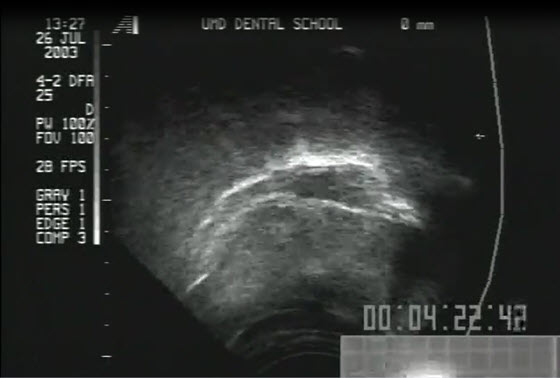contact
Yulvonnda Brown
Office Manager
F 410-706-0865
Single Swallow 20cc water (made using SURFACES)
Schematic of Tongue Surface Moving in Time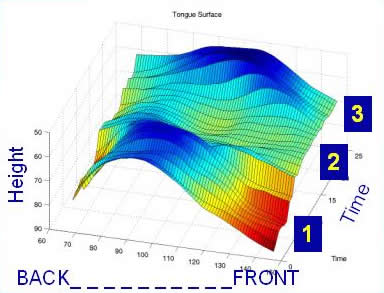
-
First, the bolus (water) depresses the anterior tongue (red). [1 on schematic]
-
The bolus is transported backward. [2]
-
The tongue elevates A-to-P as the bolus is squeezed backward. [3]
Schematic of 5cc and 20cc Swallows
Swallowing patterns are similar for two bolus sizes.
Schematic of Each Swallow
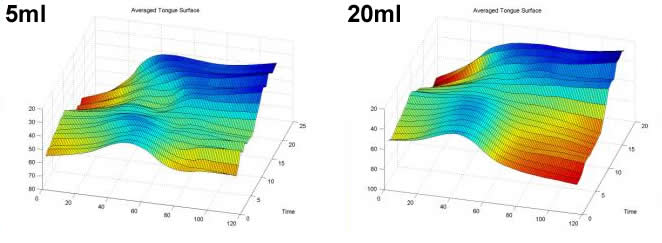
The 20ml bolus depresses more deeply in the front around the bolus (red). The tongue elevates more rapidly to achieve maximum closure.
Overlaid Schematics
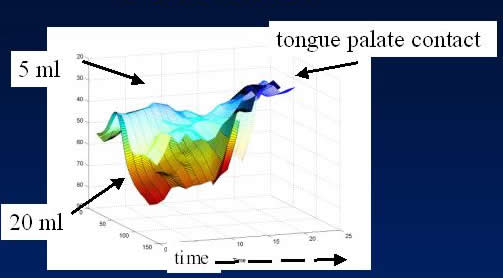
The 20 ml bolus starts with a more open tongue, but both swallows end with full contact of the palate. Timing is also similar, so differences are primarily scalar.
Unrestrained Jaw vs 10mm Bite Block Swallows
The overlay shows the tongue to be anterior and inferior in the BB case.
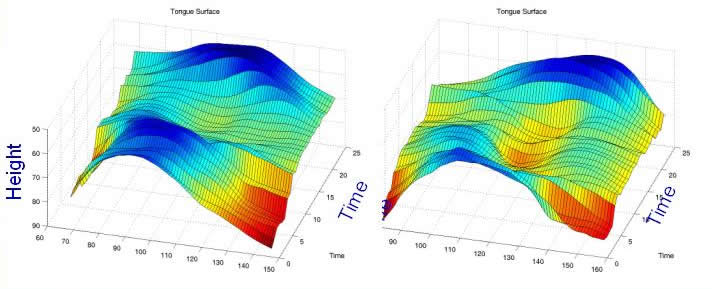
The biteblock causes a more anterior tongue initially (blue), a lower depression during propulsion (yellow), and a more anterior final closure (blue).
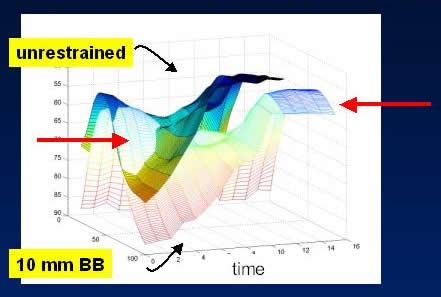
The initial and final closures are more anterior in BB than unrestrained (red arrows). Perhaps the subject could only reach a more anterior (and lower) part of the palate.

